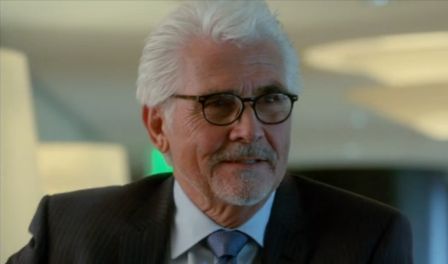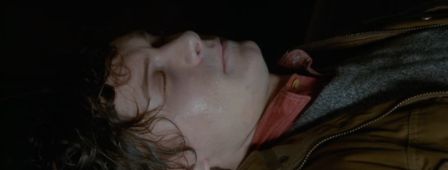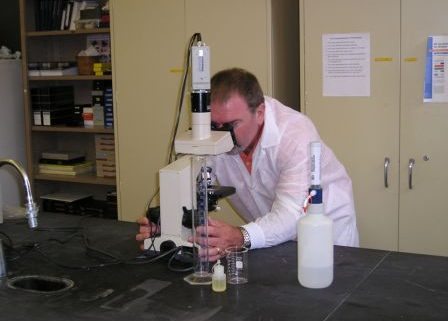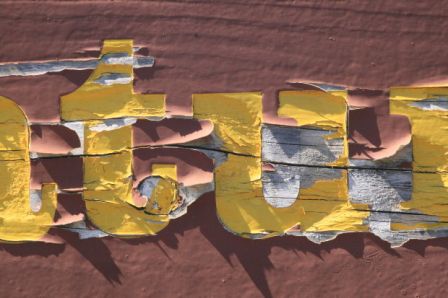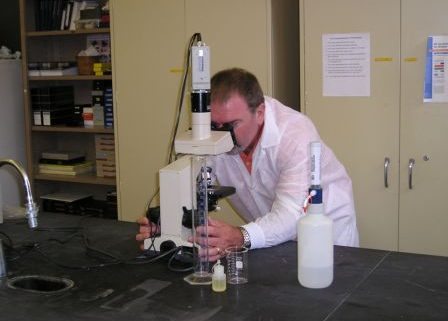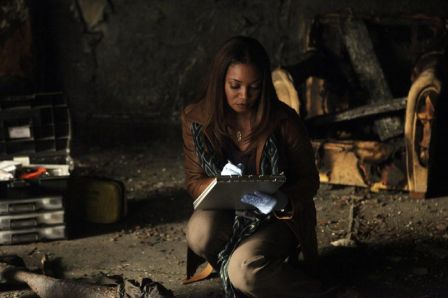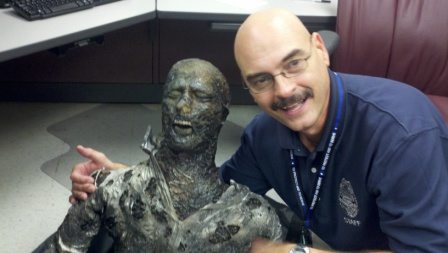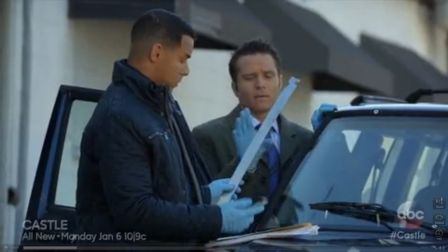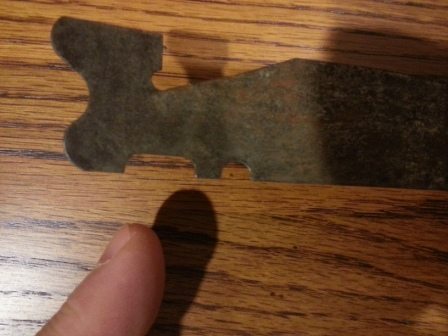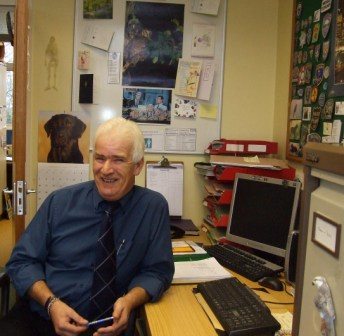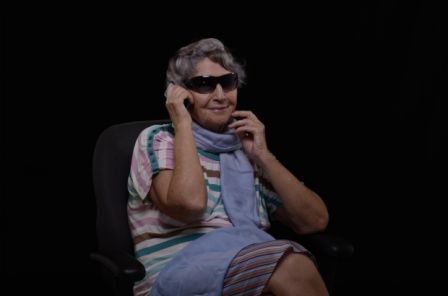A father and son reunion. Spies. Wedding bells. Secret compartments. A proud new papa and his baby pictures. And, of course, murder. Cram them all into a one hour TV show and we have what was a pretty nice episode of Castle. And, if my instincts are correct, Good Cop Melanie Atkins was doing the happy dance throughout the entire show. Let’s see if my old cop intuition is still accurate.
We first met Rick Castle’s father, Jackson Hunt (or whatever his name is), in Hunt (Episode 5×16), when Jackson helped rescue Alexis in Paris after her kidnapping. Of course, he was the reason she was kidnapped in the first place, but for now I’ll let that slide. James Brolin did an excellent job in both episodes. I really loved this one. Talk about intrigue, surprises, and startling family moments… this show had them in spades.
We were first treated to Rick and Kate attempting to choose a wedding date, and they couldn’t seem to agree on much of anything except that Kate wants to get married sooner, rather than later (accentuated by a butt slap, and then a kiss… tee hee!) Martha even threw in her two cents worth, telling them to just elope. Sure, that would be easy, but fans need more. Right?
A call to a murder scene interrupted them before they could come to a decision, of course, and the evidence around the body didn’t tell them much. Rick found a hidden laptop, but digging into it took a while. They finally got a lead and headed across town to check it out.
Rick got a phone call that confused him before they met the man they planned to interview, but I think he recognized his father’s voice. The look on his face when he saw his dad for only the second time in his life was priceless.
Nathan killed it the first time, showing the hunger Castle has had all his life to know his father, and he did it again. Surprise, elation, yearning, desperation, and disbelief played across his face, all at the same time. I was drawn in immediately, and wondered how long Rick could hold out before telling Kate who the man was.
Turns out he didn’t say anything, until Jackson showed up at Rick’s door with a bullet hole in his side. Martha’s gasp when she opened the door was spot on (Susan Sullivan is a gem). I loved her role in this scene. She was obviously drawn to Jackson, but wanted to tell him to kiss off, too. Such fire in her eyes! His wound scared her, however, and she went right to work helping Rick get the man to the bedroom so they could patch him up.
Then Kate walked in on her and Rick doing surgery to extract the bullet. Yikes! Kate, of course, is all cop, so once she got over the shock of finding her murder suspect lying all bloody on the bed she shares with Rick, she balked at believing a word that came out of Jackson’s mouth. I loved her fury and blatant disbelief. Stana knows her character inside and out, and it shows. (That’s one reason she just won a People’s Choice for Best Dramatic Actress!)
I love that Jackson told them the truth and swooped in to save Rick’s life, taking care of the murderer Kate was after — and giving Martha closure — in the process. Might have been a little over the top, but I enjoyed the ride. I’m glad he popped up again and hope we haven’t seen the last of him.
“I keep making the mistake of thinking he’s family, but he’s not,” Rick said of his dad at the end of the show, his eyes locked with Kate’s. “You are.”
Squee! My little Caskett-loving heart went all pitter-patter. They agreed on a September wedding, in spite of Rick’s book tour, and that made me smile even wider. Woohoo! Finally, we have a wedding date. Maybe dear old dad will make another appearance then. Who knows? Or maybe he’ll play a part in taking down Beckett’s biggest foe, Senator Bracken, at some point. The CIA isn’t supposed to operate on US soil, but with Jackson operating “outside” CIA parameters, anything is possible. This is TV, after all.
Martha and Rick’s scene at the end touched my heart. So poignant and real.
Can’t wait to see Kate and Rick vs. the paparazzi in next week’s episode. Maybe they’ll finally announce their engagement.
There wasn’t a lot of procedure to analyze this week. Even Lanie, the writers’ outlet for information, delivered the clues almost flawlessly.
Before I go any further I’d like to remind everyone that I pick apart the police and forensics procedures and methods at the requests of writers. I, like you, watch television for entertainment, not because I expect fictional TV shows to be totally accurate in every aspect of, well, anything. Castle is a fun show. I like it, and I like the characters. In fact, the cast has a unique chemistry that so many shows of this type seem to lack.
As I stated earlier, my part of this review is at the requests of writers who want to know if what they see on the show is how things are in the real world. So, without further delay, Lanie…
She told us the murder victim had been moved from the scene of the crime to where the body was discovered by officer responding as a result of 911 call. Lanie offered that lividity was the factor that helped her draw that conclusion.
Before we dig a little deeper into Lanie’s conclusions, let’s refresh our memories regarding lividity and rigor mortis, and what they tell us about murder and the time it occurred.
Determining The Time of Death
When the heart stops beating, gravity pulls blood to the lowest point in the body. Blood pooling in those low areas stains the surrounding tissue, giving an appearance that looks somewhat like bruising. This purplish staining of tissue is called livor mortis, or lividity. For example, a victim lying flat on his back at the time of death exhibits lividity on his back, buttocks, and the back of his legs. The same is true on the front of the body, if the victim is found lying face down.
Livor Mortis (lividity) normally begins within the first two hours after death. The process reaches it’s full peak in eight to twelve hours.
Lividity becomes totally fixed after six to eight hours after death occurs, meaning the tissue-staining is fixed and will not change.
However, if the victim is moved during the first six hours after death the purplish discoloration can shift (lividity is not fixed), causing the new, lowest portion of the body to exhibit lividity.
Moving the body after eight hours (lividity is fixed) will not change the patterns of discoloration. Therefore, investigators know a body found lying face down with lividity on the back, has been moved.
Rookie officers have often confused lividity with bruising caused by fighting.
Remember, ambient air temperature is always a factor in determining the TOD (time of death). A hot climate can accelerate lividity, while a colder air temperature can slow it down considerably.
Rigor Mortis is the stiffening of muscles after death. The muscle stiffening (hence the use of the term, stiff) is caused by the loss of adenosine triphosphate (ATP) from the muscle tissue. Without ATP, the muscles can no longer function normally, and begin to contract and stiffen.
Rigor mortis begins in the smaller muscles of the face and neck in about two hours after death. The process then moves downward from the head to the feet. The body becomes completely stiff in approximately eight to twelve hours.
Bodies remain rigid (the rigid stage of rigor mortis) for approximately eighteen hours, at which time the process begins to reverse itself—small muscles first, followed by the larger ones.
In approximately twelve hours the body returns to a flaccid state.
Again, like livor mortis, air temperature is a factor that can accelerate or slow down rigor mortis. Certain poisons and illnesses can also affect rigor mortis.
Determining TOD using rigor mortis is not an exact science.
Dead Ted, the victim of the week
Okay, now let’s look at the information Lanie provided to Beckett and crew. She was totally correct about lividity and that it could have indicated the body had been moved.
However, she stated the time of death was between 8 and 11. The time was 11:50 when uniformed officers responded to the 911 call placed by the killer. That’s a window of 4 hours max, from the time of death until the officers’ arrival and discovery of the body. If this time frame is correct, lividity would not have been totally fixed when the body was moved. Instead, at least some of the purplish staining would have presented in more than one area of the body.
Next, Lanie showed Beckett and Castle a perfectly preserved print of an Iranian coin on Dead Ted’s heel. We were supposed to believe that a coin in Ted’s sock would have left the bright red outline. Lanie’s explanation was that rigor mortis caused the marking.
But we know that wouldn’t be the case because rigor is merely a stiffing of muscle tissue.
Could lividity cause an impression to show up after death? Maybe. But, had it been lividity that caused the print on Dead Ted’s heel, we’d have seen more purplish staining around it, and the print would have presented as lighter in color, not darker than the surrounding flesh. The same is true when any area of a dead body is in contact with an object. Those surfaces force blood away, leaving lighter spots at the points of contact.
An object pressed against the flesh, such as the coin, would have caused less blood to pool in the area of the disc, not more. Further evidence that lividity probably wouldn’t have caused an impression of any type on Dead Ted’s foot, is that he’d have needed to have been in an upright position (such as standing or sitting in a chair) with his feet at lower point in relation to the rest of the body during the process of lividity. Remember, gravity pulls blood downward, not horizontally.
One other point to ponder. I assume, to allow enough time to pass for Lanie to see lividity, the killer must have waited until after planting the body in the apartment shower before removing the shoes and then the coin. Otherwise, there was nowhere near enough time for any sort of impression to form on the foot. Even if we give Lanie the benefit of the doubt and go along with her theory of rigor causing the coin impression, the time frame is off.
And, why in the world would the killer wait until he’d delivered the body to the apartment before searching for the coin? Why not do so immediately after shooting him?
Another question – How did the killer carry a dead man through the lobby of an apartment building, unnoticed, and then deliver poor old Dead Ted to his upper floor apartment?
Enough about Dead Ted. Let’s move alon… Wait, one more thing. What about Lanie saying Dead Ted had eaten funnel cake prior to his demise? What, did he swallow it whole? Did Live Ted not chew his food properly? Either way, how did Lanie know the doughy mixture of mangled clam flesh and fried batter in Dead Ted’s stomach was indeed a funnel cake and not a clam-topped pancake or waffle, or possibly a clam fritter? Why not doughnuts with an order of clams on the side?
You know, even with the somewhat off-kilter coin impression detail and funnel-clam-cake, I think Lanie delivered her lines extremely well this week. She was believable, and it was a good thing to see her wait until she had the body in the morgue before offering details that only an autopsy could reveal.
And, it was certainly refreshing to see Beckett showing a softer side. After all, she’s planning her wedding.
Okay, enough for this week. I’ll conclude by saying this was a really nice episode that continued the recent string of shows in the form of Castle its fans adore.
Nicely done.
What do you think? A hit, or a miss?
background: #bd081c no-repeat scroll 3px 50% / 14px 14px; position: absolute; opacity: 1; z-index: 8675309; display: none; cursor: pointer; top: 680px; left: 20px;”>Save




